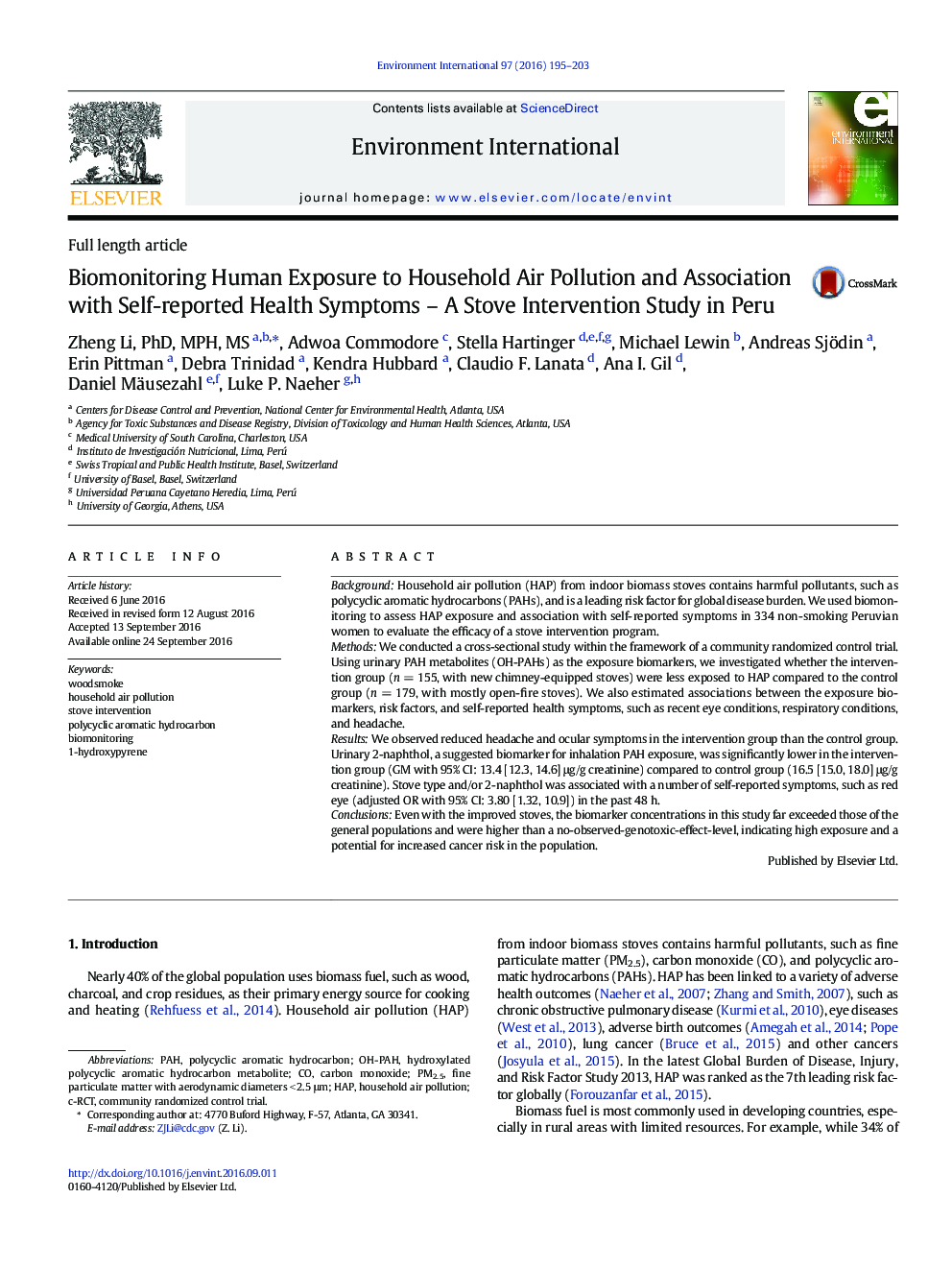| کد مقاله | کد نشریه | سال انتشار | مقاله انگلیسی | نسخه تمام متن |
|---|---|---|---|---|
| 6312626 | 1619033 | 2016 | 9 صفحه PDF | دانلود رایگان |
- New stove users had less headache and ocular symptoms than old stove users
- Household air pollution (HAP) was associated with headache and eye symptoms
- Even with the improved stoves, HAP exposure was high among the participants
- Exposure assessment is a useful tool for stove intervention studies
- Stove intervention programs should consider the durability of the new stove
BackgroundHousehold air pollution (HAP) from indoor biomass stoves contains harmful pollutants, such as polycyclic aromatic hydrocarbons (PAHs), and is a leading risk factor for global disease burden. We used biomonitoring to assess HAP exposure and association with self-reported symptoms in 334 non-smoking Peruvian women to evaluate the efficacy of a stove intervention program.MethodsWe conducted a cross-sectional study within the framework of a community randomized control trial. Using urinary PAH metabolites (OH-PAHs) as the exposure biomarkers, we investigated whether the intervention group (n = 155, with new chimney-equipped stoves) were less exposed to HAP compared to the control group (n = 179, with mostly open-fire stoves). We also estimated associations between the exposure biomarkers, risk factors, and self-reported health symptoms, such as recent eye conditions, respiratory conditions, and headache.ResultsWe observed reduced headache and ocular symptoms in the intervention group than the control group. Urinary 2-naphthol, a suggested biomarker for inhalation PAH exposure, was significantly lower in the intervention group (GM with 95% CI: 13.4 [12.3, 14.6] μg/g creatinine) compared to control group (16.5 [15.0, 18.0] μg/g creatinine). Stove type and/or 2-naphthol was associated with a number of self-reported symptoms, such as red eye (adjusted OR with 95% CI: 3.80 [1.32, 10.9]) in the past 48 h.ConclusionsEven with the improved stoves, the biomarker concentrations in this study far exceeded those of the general populations and were higher than a no-observed-genotoxic-effect-level, indicating high exposure and a potential for increased cancer risk in the population.
Prevalence of self-reported health symptoms in the control group (women using mostly traditional open-fire stoves) and intervention group (women using new chimney-equipped stoves).
Journal: Environment International - Volume 97, December 2016, Pages 195-203
